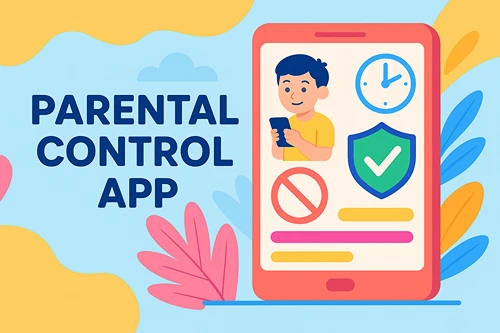Online Learning Spaces: How to Build a Safe and Engaging Educational Website for Kids
Just like their parents, children can grasp new languages, take classes, and attend workshops online. Not only is e-learning effective, but it also offers more flexibility and convenience than traditional methods. Plus, it can take various forms that may not be available in physical classroom settings.
For example, students may have access to virtual labs and simulations, interactive content, webinars, and other learning resources. Some educational platforms also leverage gamification or augmented reality to make the whole experience more exciting.
You, too, can start a business in this niche and make a difference through your work. First, decide what kind of content you want to create. Next, choose a website builder that allows you to implement your ideas with ease. After that, try out different distribution channels to maximize your reach.
Here are some strategies to help you out.
Create an Educational Website in 5 Steps
E-learning is just as effective as or even superior to traditional learning, suggests a 2019 study published in the National Journal of Physiology, Pharmacy, and Pharmacology. As the scientists note, this approach allows for highly personalized content, which may help students grasp new concepts more easily. Previous research supports these findings.
However, there are different forms of online learning—and each has distinct advantages and drawbacks.
For instance, MOOCs (Massively Open Online Courses) cover a topic in-depth, providing students with the information they need to learn new skills. The downside is that they allow for limited interaction between learners and educators, and the content is standardized.
By comparison, live webinars are highly interactive and can be personalized to some degree. The same goes for virtual workshops, seminars, and adaptive learning experiences.
With that in mind, determine what kind of site you want to build. Is it a digital library? A tutoring platform? Or perhaps a marketplace for online courses?
Next, take these steps to create an educational website that drives results:
Define a Set of Must-Have Features
Think about how you want students to interact with your site, and then seek ways to keep them engaged. Consider the user experience, data security, filtering options, and other aspects.
For starters, select a website builder with fully customizable templates. Make sure it supports the features you have in mind. These may include:
- A responsive design
- An easy-to-use content management system (CMS)
- A user-friendly dashboard
- Filtering and sorting options
- Online quizzes that enhance learning
- Virtual simulations
- Payment gateway
- Live Polls
Take Duolingo, for example. Not only does it look great on all screen sizes, but it also uses gamification to facilitate learning.
Students can track their progress in real-time, engage in friendly competitions, and complete daily quests to earn rewards. They also have access to an online shop selling power-ups and other virtual items.
These features drive engagement and make learning fun. Plus, they incorporate animations, quizzes, and other interactive elements to keep children’s attention.
Select Age-Appropriate Content
Children of different ages have different levels of understanding, and you should tailor your content accordingly.
For instance, interactive stories and virtual puzzles are ideal for preschool children. You could also provide them with digital coloring books and drawing tools.
Early elementary students, on the other hand, can engage in more complex activities. Think math games, video experiments, or interactive stories revolving around historical figures, landmarks, or traditions.
That said, decide whether you’ll target one or more age groups. Research your audience, and then upload content for each segment.
If your site appeals to multiple age groups, consider giving users the option to naturally progress from one level of study to another. This approach can help you expand your reach and provide students with more flexibility.
Prioritize Accessibility
Make sure your website is accessible to everyone, including children with disabilities. Here are some practices to keep in mind:
- Use proper color contrast, scalable text, and readable fonts for legibility
- Add alt text to images to make them accessible to screen readers
- Implement text-to-speech and keyboard navigation
- Structure your content with headings
- Add closed captions to videos
- Avoid blinking or flashing content
For example, keyboard navigation ensures your site is accessible to users with motor or visual impairments. Closed captions, on the other hand, enable children with cognitive impairments or hearing problems to understand your content.
Also, remove any images, banners, or animations that blink or flash more than three times per second. These could trigger seizures in children with epilepsy or similar disorders.
Go one step further and make your content available in multiple languages. This practice can help you reach a global audience, as well as local students who don’t speak English.
Ensure Online Privacy and Safety
Adults and children alike may be exposed to cyberbullying, harassment, scams, and other threats when navigating the internet. That’s why you should go the extra mile to secure your website and ensure users’ privacy.
To get started, implement multifactor authentication and encrypted connections to safeguard user data. Make sure your site complies with the California Consumer Privacy Act (CCPA) or other data protection and privacy laws.
Apart from that, choose a secure web host that offers automatic daily backups. Set up a firewall, look for reputable antivirus or anti-malware solutions, and run regular scans. Ideally, opt for real-time monitoring tools to detect suspicious activities as they occur.
Simplify Your Navigation
Good website navigation contributes to accessibility. It can also improve the user experience, facilitate learning, and help your website climb Google’s rankings.
As a general rule, every page should be no more than three clicks away from the homepage. Use clear menu labels so that visitors can easily find the information they need.
Add visual content to keep young students engaged with your site. Just make sure it provides value. Remove unnecessary pop-ups, banners, and other distracting elements, such as autoplay videos.
For best results, place the most important categories (e.g., online courses or eBooks) at the beginning of the menu. Use white space to highlight essential information, and strategically position your CTA buttons for maximum visibility.
It’s also a good idea to add a sticky navigation bar. This element will remain visible as users scroll down the page.
What matters most is to keep the end user in mind. Since you’re targeting children, your website should be intuitive, engaging, and easy to navigate. Maintain a consistent layout across all pages, incorporate animations for visual storytelling, and provide audio instructions as needed.






